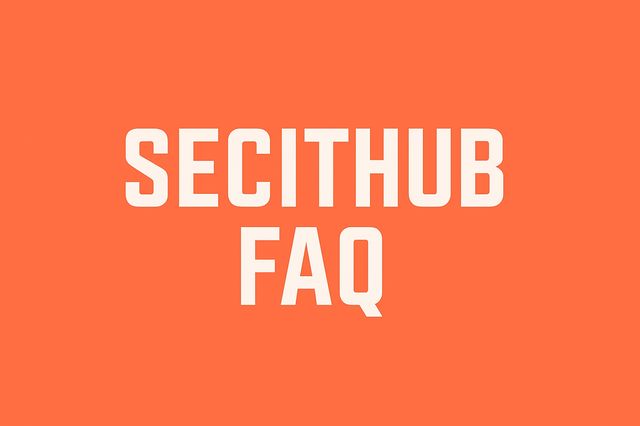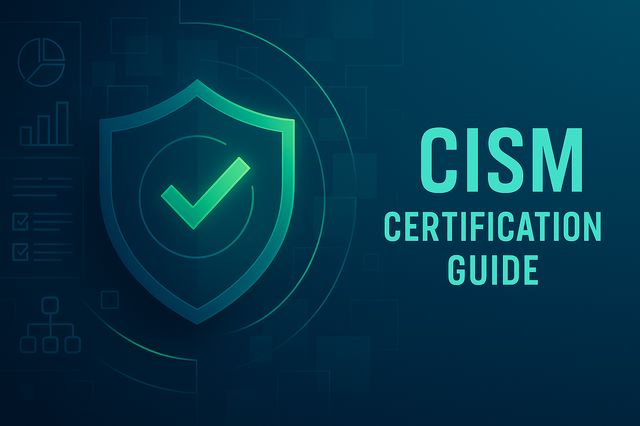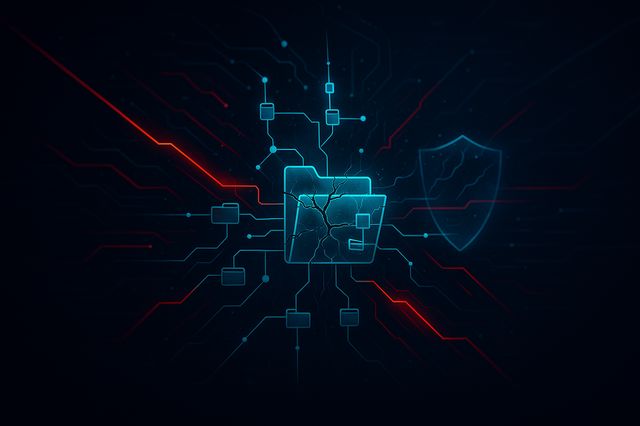In an age where AI decisions affect finance, healthcare, and infrastructure, architectural trust has become the new frontier of cybersecurity. This article explores how Zero-Tenant architectures are reshaping the balance between innovation and control. To understand this shift more deeply, we spoke with Thomas Hansen, the founder and CEO of AINIRO, a company pioneering private and open-source AI infrastructure.
Our discussion focused on a question that many CISOs and CTOs quietly grapple with , “How can organizations accelerate AI adoption without surrendering control over their data, models, and infrastructure“

How architectural trust is redefining AI security, sovereignty, and resilience.
Hansen’s perspective offered a revealing look into the architecture of trust a domain where technology, governance, and security now converge.
His framework, known as Zero-Tenant architecture, represents a quiet revolution in AI security: systems designed not around policy, but around mathematical isolation.
Instead of reinforcing traditional perimeters, this approach builds security into the structure of computation itself.
It’s not about firewalls or compliance checklists it’s about creating AI that’s both powerful and sovereign.
A New Era of Architectural Trust
As AI becomes the new operational backbone of modern enterprises, the question shifts from how to use it to how to trust it.
AI now underpins critical workloads from decision automation and fraud detection to cloud orchestration and DevOps pipelines. But while adoption has skyrocketed, confidence has not.
Zero-Tenant architectures represent a quiet revolution in AI security: systems designed not around policy, but around mathematical isolation.
Instead of assuming shared infrastructure can be trusted, this model rebuilds trust from the ground up by eliminating shared layers altogether.
This shift marks a profound cultural and technical evolution: security no longer enforced from outside, but embedded in how systems are built.
The Problem | A Crisis of Control
One emerging model comes from AINIRO, whose Magic Cloud framework applies Zero-Tenant principles to eliminate shared data layers entirely.
Each deployment runs as a self-contained “cloudlet” an independent Kubernetes pod built from its own Docker image, with unique file systems, configurations, and databases.
This ensures that no customer ever shares runtime, memory space, or network pathways with another.
It’s a design that values integrity over convenience harder to deploy, but exponentially safer.
Magic Cloud is also open-source and can be installed locally on a company’s own infrastructure.
It supports local LLM integrations, meaning inference and data processing can occur entirely within corporate boundaries crucial for regulated sectors that must comply with GDPR, HIPAA, or NIS2.
Rather than centralizing intelligence, AINIRO decentralizes it proving that AI can be both powerful and private.
Open-Source as a Foundation for Verifiable Security
Security isn’t only about encryption or isolation it’s about verifiability.
In AI infrastructure, transparency is the only sustainable path to trust.
Open-source systems allow organizations to see how their data is processed, how access is enforced, and how vulnerabilities are mitigated rather than simply trusting vendor assurances.
AINIRO’s architecture demonstrates this principle in practice: its entire Magic Cloud framework is open-source, enabling independent audits and full visibility into security controls.
This approach aligns with both NIST’s AI Risk Management Framework and ENISA’s guidelines for explainability and traceability in AI systems.
For regulated sectors, open codebases reduce compliance complexity.
Security teams can validate that the software’s behavior aligns with privacy policies and legal requirements turning audit readiness into a byproduct of design.
Ultimately, openness becomes the new perimeter: if you can verify it, you can trust it
Vibe Coding and Low-Code | Accelerating Secure AI Development
AI innovation often struggles under the weight of complexity long release cycles, dependency chains, and human error.
The emerging concept of Vibe Coding addresses this challenge by merging natural-language instructions with automated backend generation.
In Magic Cloud, this means that developers and even non-developers can describe what they want an AI agent to do, and the platform generates the required APIs, logic, and data bindings automatically.
This combination of Low-Code efficiency and Zero-Tenant isolation introduces a new model of productivity: speed without exposure.
Beyond convenience, it’s an engineering control.
By automating code creation, dependency management, and testing, Vibe Coding reduces human error still the root cause of 99% of breaches, according to ENISA.
And because the underlying framework is open-source, every generated component remains inspectable and auditable.
The result is a new paradigm: secure-by-default software creation, where the same mechanisms that accelerate innovation also enforce governance.
Engineering Principles Behind Zero-Tenant Security
Zero-Tenant is more than a deployment pattern; it’s an engineering philosophy.
It redefines four foundational pillars of digital trust:
Isolation = Architectural Security
Each tenant runs inside its own sealed compute layer.
No shared file systems, no shared credentials, no shared network stacks.
Security becomes deterministic not conditional.
Local Inference = Sovereignty & Latency Reduction
Running AI models locally, or on private GPUs, eliminates dependency on public inference APIs.
This approach not only enhances privacy but also reduces latency critical for real-time decision systems like finance, healthcare, and IoT.
Open-Source = Verifiability
Transparency in the codebase allows for third-party audits and continuous inspection.
You can see how data is handled rather than trusting vendor assurances.
In governance terms, open architecture aligns with NIST’s AI Risk Management Framework principle of explainability and accountability.
Automation = Reducing Human Error
AINIRO’s pipeline automates code analysis, dependency scanning, and security testing exceeding industry averages.
By embedding static code analysis and over 1,000 unit tests (98% coverage), the system prevents vulnerabilities before deployment, removing the human variable that causes 99% of security incidents.
Together, these four layers form a self-healing trust fabric, where every component reinforces isolation and integrity.
Why It Matters
The evolution of AI security will depend less on external defenses and more on architectural trust.
Perimeter firewalls and endpoint monitoring can’t fix what’s fundamentally a design issue.
Zero-Tenant design shows that resilience can be engineered — not just enforced.
When every AI instance operates autonomously and every dataset remains confined to its origin,
security scales organically with innovation.
It’s not about adding more controls it’s about removing unnecessary dependencies that create attack surfaces in the first place.
The Business Dimension | Efficiency Without Exposure
Beyond compliance and governance, Zero-Tenant models deliver measurable operational benefits:
- Reduced Downtime | An issue in one instance cannot cascade to others.
- Simplified Auditing | Each cloudlet is an isolated record of truth, streamlining regulatory reporting.
- Cost Efficiency | Updates and patches deploy independently, lowering maintenance overhead.
- Developer Empowerment | Low-code “Vibe Coding” allows rapid AI development without compromising security.
According to ENISA’s 2025 Cloud Security Outlook, “architectural compartmentalization is expected to become a baseline requirement for AI infrastructures within the EU.”
That shift will redefine how companies perceive both resilience and efficiency not as trade-offs, but as outcomes of clean design.
Ready to build AI you can trust?
Value Bridge | Looking Ahead
For enterprises designing their next generation of AI infrastructure, the question is no longer whether to isolate but how efficiently it can be done.
Zero-Tenant frameworks, such as AINIRO’s, offer a glimpse into what trustworthy AI can look like when control returns to the enterprise.
“The future of AI security isn’t about building smarter firewalls; it’s about building smarter boundaries.”
When security becomes structural, not procedural, organizations reclaim what cloud abstraction took away true ownership of data, models, and decisions.

A Zero-Tenant system isolates every customer in a self-contained environment, eliminating shared resources and preventing cross-tenant data exposure.
Shared infrastructure can leak proprietary model data or training datasets through misconfiguration or exploit, compromising confidentiality and compliance.
Yes. Frameworks like Magic Cloud can be installed on-premise and configured with locally hosted LLMs, maintaining complete data sovereignty.
Not necessarily. Modern container orchestration and edge inference reduce latency while maintaining isolation, making private AI deployment practical.
Open-source codebases enable transparency and external verification, ensuring compliance with standards like NIST AI RMF and ISO 27001.
Finance, healthcare, legal, and public sector organizations any environment where privacy, traceability, and compliance are critical.
Open-source frameworks allow full visibility into security and data-handling practices, making it easier for compliance teams to verify adherence to standards such as GDPR, ISO 27001, and NIS2 without relying solely on vendor documentation.
Yes. When properly governed, Low-Code environments can integrate automated testing, static code analysis, and pre-approved components — reducing human error while maintaining consistent security baselines across all generated applications.
References
NIST’s AI Risk Management Framework (AI RMF) – NIST
Magic Cloud Security – ainiro.io
ENISA Threat Landscape 2025 Booklet – ENISA


